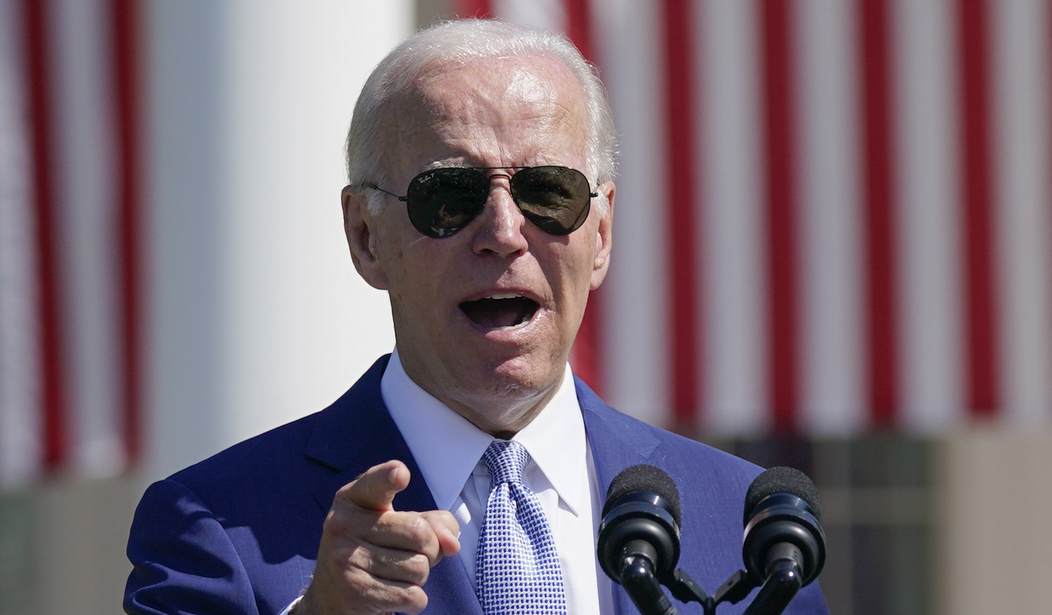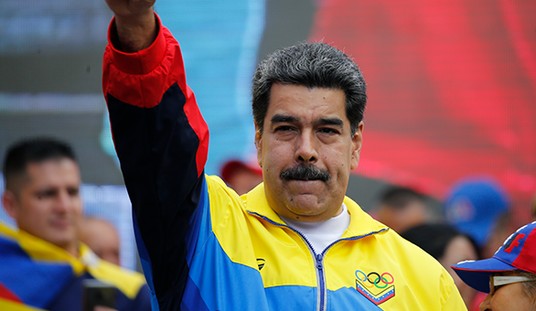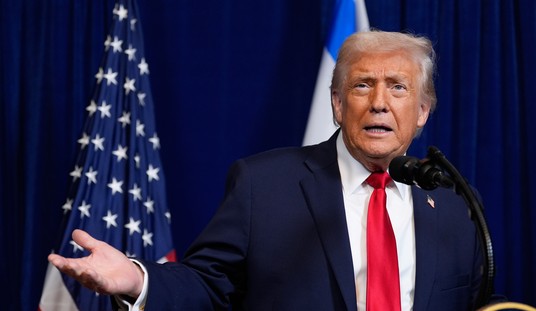There’s a stench of desperation to this argument, as if the White House has nothing more convincing to say in defense of its indefensible bribe to college grads.
Which may have to do with the fact that the White House has nothing more convincing to say in defense of its indefensible bribe to college grads.
Yesterday Karine Jean-Pierre was asked how they’re planning to pay for a program that’ll cost in excess of $300 billion and was left stammering. And no wonder: What could she have plausibly said in reply?
“You can’t say how much it’s going to cost. You can’t say exactly how it’s going to be paid for and you can’t say exactly who is paying for the costs…How is it fiscally responsible?
Jean-Pierre: *word salad* pic.twitter.com/b3jcJO1KVz
— RNC Research (@RNCResearch) August 25, 2022
The full exchange with the reporter is even more painful.
Biden is facing an avalanche of criticism over his policy and not just from Republicans. It’s unfair to taxpayers who didn’t go to college; it’s unfair to taxpayers who did go but who paid off their loans; it’s unfair to future college students who haven’t taken out loans yet; it risks goosing inflation; it runs up the deficit; it incentivizes universities to keep raising tuition and future presidents to keep ordering more bailouts; it’s entirely arbitrary. What do you do when you’re holding a hand of cards that feeble?
You pound the table, damn it, and call your critics hypocrites:
Congresswoman Marjorie Taylor Greene had $183,504 in PPP loans forgiven.https://t.co/4FoCymt8TB
— The White House (@WhiteHouse) August 25, 2022
That was the first tweet in a series calling out Republicans in Congress who’ve criticized Biden’s student loan plan for having accepted PPP loans during the pandemic that were later forgiven. Rank-and-file lefties also got in on the act, attacking conservative commentators who complained about the program by publicizing the PPP loans they accepted — except that, in more than one case, they misidentified the recipient. Ben Shapiro was accused of hypocrisy by someone who mistook him for a different Ben Shapiro who’d received PPP money. (Go figure that there’s more than one “Ben Shapiro” in America.) Charles Cooke of NRO was accused by someone who mistook the name of his podcast on NRO for the name of a restaurant in Tampa that had taken out a PPP loan.
Lefties are very invested in this tu quoque, in other words, and you can see why. It muddies the waters of the debate over the justness of Biden’s new program, hoping to confuse casual voters who don’t follow politics closely, who might not be able to tell you what “PPP” stands for, and who therefore might be convinced that this debt forgiveness plan is no different from that debt forgiveness plan.
But they’re worlds apart, as even a passing acquaintance with the details reveals. Dan Foster sums it up:
The government made it illegal for your business to be open, authorized payments to keep you out of bankruptcy, and then dunked on your ass for accepting them. Owned. https://t.co/xlVkF4T73a
— Foster (@foster_type) August 25, 2022
“PPP” stands for Paycheck Protection Program. The purpose of that program was to keep businesses afloat — and, more specifically, the employees who depended on those businesses for their living — in the early days of COVID when lockdowns ground country to a halt. Without PPP, the economy would have collapsed. It was an emergency mega-stimulus to replace wages that suddenly couldn’t be paid due to a once-in-a-lifetime global calamity. And although it operated as a loan, that loan came built-in with a promise of forgiveness up front so long as the money was applied to its proper end, wage replacement for workers. It was a grant, in other words, provided that the funds weren’t abused. And it was a grant designed to benefit working-class people who feared for their jobs during a crisis.
The core moral critique of Biden’s student loan forgiveness plan is that it relieves people of debt they willingly accepted, for no compelling reason. PPP was the opposite: Businesses didn’t shut down willingly but they sure did have a compelling reason to do so. As such, even some mainstream reporters are struggling to grasp the point the White House is trying to make:
Fascinating to see PPP — which mainly kept workers paid during shutdowns rather than simply funneling money to business owners — retconned into TARP 2.0 during the great student debt Twitter debate.
— Nick Riccardi (@NickRiccardi) August 26, 2022
Marco Rubio spearheaded the passage of PPP in the Senate two years ago. That program couldn’t be more different from the Biden White House suddenly making it rain for college grads, he writes today:
Let’s start with the obvious: federal student loans were just that, loans. The whole idea was that students would take the loans to pay for an education that would lead to a job that repays them (along with the massive interest accumulated).
There are other practical differences as well. The president is now asking those same small business owners and employees, most of whom never went to college, to shoulder the burden of college debt for others.
Again, don’t just take my word for it. In the words of President Barack Obama’s chief economic adviser and Harvard economist Jason Furman: “Student loan relief is not free. Part of it [will] be paid for by the 87% of Americans who do not benefit but lose out from inflation.”
That is why it will do nothing for the people Democrats used to claim to protect: working families with minimal or nonexistent student debt. Unlike my payroll grants, forgiving student loan debt won’t create jobs, save small businesses, or reopen the American economy.
If you take the White House’s argument seriously, the Republicans with the strongest moral standing to criticize the new student debt giveaway are those who declined a PPP loan and fired their employees instead. Or, I suppose, those who accepted the loans and insisted on paying them back in full even though the loans by their own terms used the prospect of forgiveness to incentivize redistribution of the money to employees. Rubio’s program saved the working class from ruin; Biden’s program is a handout to the professional class for which the working class will be forced to pick up the tab.
But other than that? Sure, the two programs are practically twins.
Oh, there’s one other important difference: PPP was enacted the old-fashioned way, by Congress passing a bill with bipartisan support which the president signed. It wasn’t handed down via an executive diktat of dubious constitutionality.
Maybe the White House’s messaging strategy will work, though. Democrats in purple jurisdictions are deathly afraid of a populist groundswell against Biden’s plan, which is why some aren’t waiting around for the first polling to start backing away from it. Screaming “whatabout PPP loans?” might be enough of a red herring to convince low-information voters that an emergency bailout of Group A (the entire labor force) surely justifies a bailout of Group B (a basically random group of college grads), even if the bailout of Group B is little more than a cash bribe aimed at buying votes in the midterms.








Join the conversation as a VIP Member